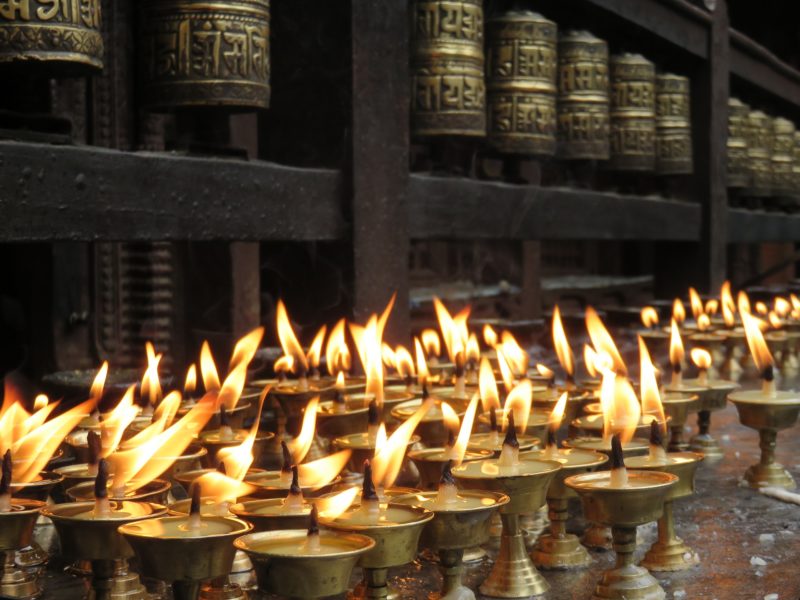Candle making is one of the most ancient arts but is still important to modern society. The candle has been a valuable tool for humans since its invention; lighting rooms, providing warmth, and illuminating dark places.
If you’re interested in learning the basics of candle making, read on!

Know the Wax
The first thing you need to know about is wax. There are many types of wax used in candle making; paraffin, soy, beeswax, barberry, etc., but they all follow some basic principles. Waxes are composed of a combination of two molecules: Hydrocarbons (molecules with hydrogen and carbon) and esters (organic molecules containing oxygen).
In order to make a good candle out of wax, it must have a low melting point, it should be flammable, not chemically reactive to the things you put into it (like essential oils), and be clean.
Kinds of Wax
Paraffin
The most common wax to use; it typically has a low melting point (~120°F), and does not burn unless held directly to a flame. It also burns cleanly, contains no chemical residues, and melts evenly throughout its liquid state. It is commonly used in votives and molded candles, because of its low cost and ease of use.
Soy
A more environmentally friendly option than paraffin; the soy wax used for candle making comes from soybeans. It is generally harder to work with than paraffin however because it melts at such a high temperature (150-170°F). The good news is that soy wax burns between 40-50% longer than paraffin, giving you more for your money!
Beeswax
Has a low melting point as well, but is significantly harder to work with because it does not fuse into a liquid easily. This wax also has a distinctive smell, which you may or may not want in your finished product. It takes more time and effort to make beeswax candles, but they burn longer and cleaner.
Barberry
A new wax on the market; barberry wax burns at about 110°F, making it an excellent choice for container candles! It is most often mixed with paraffin because of its high cost compared to other types of waxes.
The Candle Making Process
In candle making, you put wax into a container, add a wick, and light it. That’s about all there is to it! Of course, if you want your candle to be perfect, some extra steps need to be taken. Here are the basics of making a candle:
- Pour some melted wax into a mold. For most candles, you’ll want the wax to harden into a solid. But, do not do it too quickly or else it will have bubbles in it. You can do this by putting it in the refrigerator for an hour or more.
- Then you would cut away any excess wax from around the edges of the candle with a sharp knife or scissors. You can also pour your wax directly onto aluminum foil and use cookie cutters to make shapes, like these heart-shaped candles. If you want to make it even more interesting, try using a stamp to press designs into the surface of your candle!
- Soy wax does not require this extra step because the fatty acids within the soy help slow down its cooling by keeping water pockets in it. This allows it to avoid forming bubbles and having brittle consistency that other types of waxes might have.
- Poke a hole through the wick with an awl or pencil so that air can enter the mold and fuel the flame from inside as well as outside. You can do this before or after putting your candle inside of its container.
- Once again, beeswax has a distinctive smell that you may or may not like; if this is the case, try putting some sand in the bottom of your candle holder to keep it from emitting any unwanted scents.
- Place your wick into its container and hold it at an angle. If you want to make sure that your candle burns evenly, make sure that your wick stays straight and doesn’t lean too far in one direction (you can read more about this topic here). Then pour melted wax over the exposed end of the wick until it is submerged.
- When using paraffin wax for container candles, melt them on low heat over a double boiler system to burn off the wax’s natural odor and prevent it from leaving a black residue on your container.
Place your finished candle in a safe place and light it!
Should I make my own candles or buy them from the store?
That is ultimately up to you and the look/feel of your finished product. But, if you want it quickly and don’t mind spending a bit extra, buy them from the store. On the other hand, if you want to get really creative or don’t trust that your candle will burn evenly (for container candles), then give it a shot!
Is there anything else I should know about making candles?
Always be careful when working with wax, especially when melting large quantities. Wax can explode or catch fire very easily! It’s not like cooking where you will only heat the wax on a stove until it melts.
Also, remember that many candle makers use flammable substances around their workspace.
Conclusion
As these steps have been outlined, you can easily see how simple it would be to make basic candles as gifts or as decor for yourself. They are much easier than many people realize, so they make a great project to do with children as well! Just be sure that they understand all safety precautions involved before letting them work with wax, wicks, and more. Check out our candle articles on the site to know more about candles.
